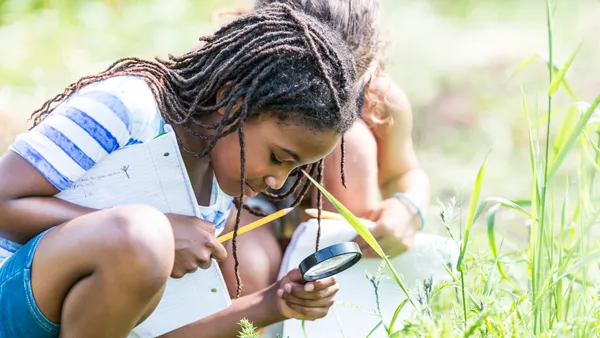Dive Brief:
-
Setting up and running successful project-based learning (PBL) lessons is time-intensive, and even though students drive the work, teachers must remain heavily involved along the way, Shanghai American School instructional coach Andrew Miller writes for Edutopia.
-
Educators can streamline the process from the start by developing clear steps and goals they want to reach, and student learning targets that remain mindful of learning differences are also important to note from the outset.
-
The PBL experience is also better if teachers remain flexible by not imposing linear timelines on results, Miller notes, writing that the goal, instead, is to create "an orderly mess."
Dive Insight:
Project-based learning (PBL) is a powerful classroom tool, allowing students to take the reins of their own education. At least that’s how it looks, sometimes, to students. Feeling they’re drivers of their own education is not only exciting — it can also have a powerful, positive impact on student achievement, particularly in high-poverty districts.
The work educators put into PBL programs, though, is extensive. Teachers are tasked to ensure a PBL program doesn’t derail into complete chaos. There’s also behind-the-scenes work teachers must do to ensure learning targets are hit. This is a demanding learning approach, particularly for teachers.
Curriculum designers eager to implement PBL, then, must allow educators the bandwidth needed to design successful projects, ensuring they have the necessary tools, time and support. Administrators who understand the work that goes into PBL and offer assistance will help teachers feel encouraged and excited — along with their students.




 Dive Awards
Dive Awards







